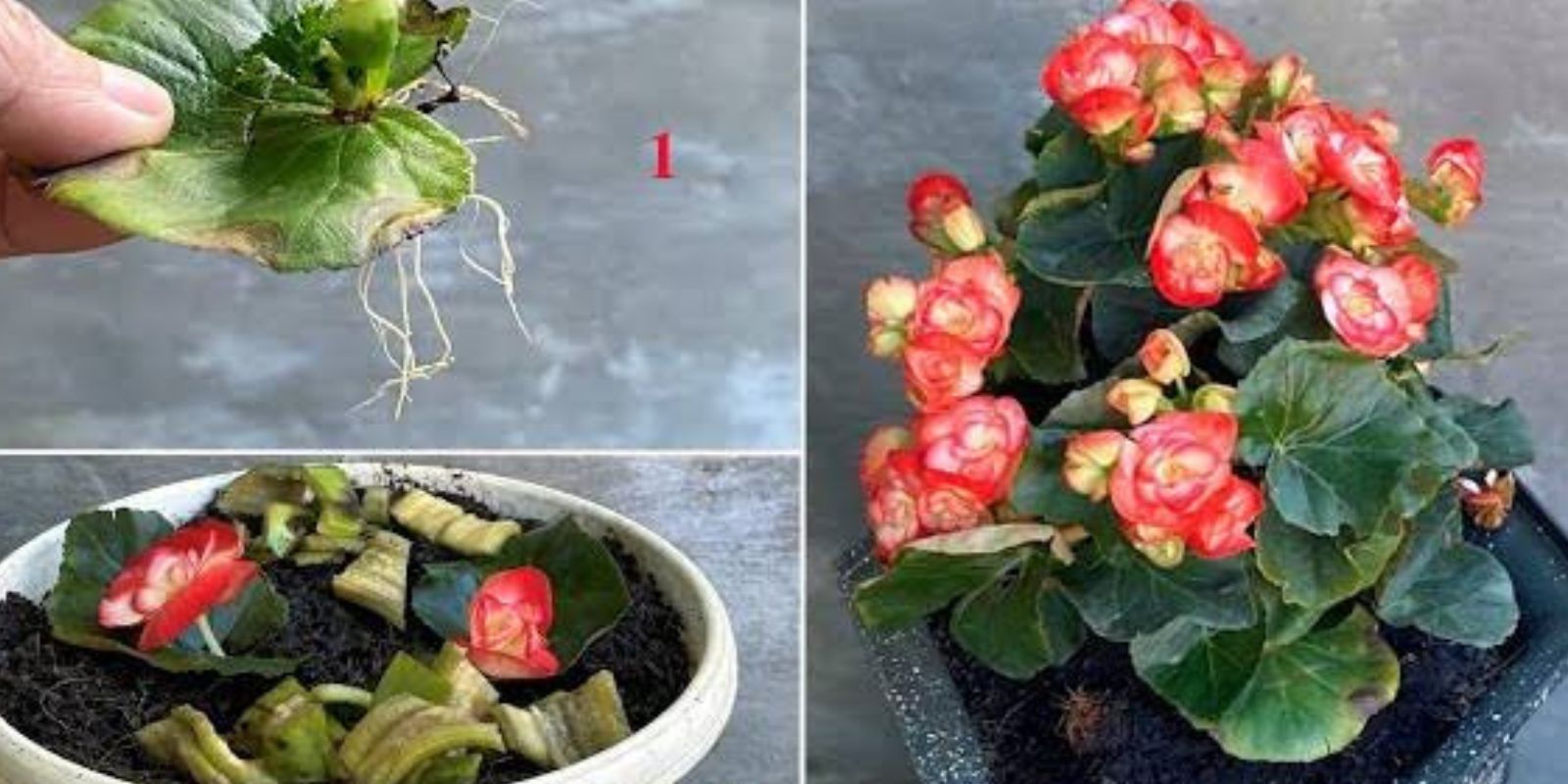Begonias are a gardener’s favorite for their vibrant colors, lush foliage, and ability to brighten up any space. If you’re a begonia enthusiast or a budding plant lover, you’ll be thrilled to know there’s a simple, natural way to propagate them without relying on synthetic rooting agents. The secret? A ripe banana! This guide will take you through a step-by-step process to multiply your begonia plants using just one banana.
The Beauty of Begonias
Begonias are versatile plants known for their stunning blooms and variety. They thrive both indoors and outdoors, making them perfect for any gardener. Whether you’re looking to expand your collection or share cuttings with friends, propagation is an essential skill. Using a banana for propagation is not only effective but also eco-friendly, as bananas contain nutrients that encourage root development.
Why Use a Banana for Propagation?
Bananas are rich in essential nutrients, including potassium, phosphorus, and natural enzymes, that support root growth. When applied to plant cuttings, these nutrients act as a natural rooting hormone, boosting the speed and success rate of propagation. This method eliminates the need for chemical additives, aligning with sustainable gardening practices.
Step-by-Step Guide to Propagating Begonias with a Banana
1. Gather Your Materials
Before starting, prepare the following:
- A ripe banana
- A knife or scissors (sterilized)
- Healthy begonia stems (4–6 inches long)
- A small container of water
- Potting mix (coco peat or sand works well)
- A small pot with drainage holes
2. Prepare the Banana Paste
Mash a ripe banana into a smooth paste. This will serve as your natural rooting agent. The nutrients in the banana provide the perfect environment for cuttings to develop roots.
3. Select and Prepare the Begonia Cuttings
Choose healthy begonia stems for propagation. Look for stems with no signs of disease or damage. Use sterilized scissors to make a clean cut below a node (the part of the stem where leaves or roots emerge).
Remove any leaves from the lower half of the stem to prevent rotting when planted.
4. Apply the Banana Paste
Dip the cut end of each stem into the mashed banana paste. Ensure the paste coats the cut thoroughly, as this is where roots will develop.
5. Plant the Cuttings
Fill your pot with moist, well-draining potting mix. Create a small hole in the soil using your finger or a pencil, then gently insert the stem. Firm the soil around the stem to secure it in place.
6. Provide the Right Conditions
Place the pot in a bright location with indirect sunlight. Avoid direct sunlight, as this can stress the cuttings and hinder root development.
7. Maintain Moisture
Water the soil lightly, ensuring it stays consistently moist but not waterlogged. Overwatering can lead to rot, so monitor the soil’s moisture level carefully.
8. Monitor for Growth
Within 2–3 weeks, roots will begin to form, and new leaves may emerge. This is a sign that your begonia cutting has successfully propagated. Continue caring for the plant by providing adequate light and water.
Additional Tips for Success
- Choose Healthy Stems: Always use healthy cuttings for propagation to increase the likelihood of success.
- Sterilize Tools: Sterilizing your cutting tools helps prevent the spread of diseases.
- Avoid Overwatering: Too much water can cause root rot, which is one of the most common issues during propagation.
- Fertilize Sparingly: Once the new plant is established, you can start fertilizing it with a diluted houseplant fertilizer to encourage growth.
Why This Method Works
The banana method works because bananas mimic the effects of synthetic rooting hormones naturally. The potassium and phosphorus in bananas promote healthy root development, while their natural enzymes create an environment conducive to growth. By combining this with the resilience of begonia plants, you can achieve successful propagation with minimal effort.
The Benefits of Propagating Begonias
- Cost-Effective Gardening: Propagating begonias allows you to expand your garden without purchasing new plants.
- Eco-Friendly Approach: Using bananas reduces waste and eliminates the need for synthetic chemicals.
- Personalized Gardening: Propagating allows you to share plants with friends or create a uniform display of your favorite begonias.
Common Challenges and How to Overcome Them
1. Rotting Cuttings
Rotting usually occurs due to overwatering or improper soil conditions. Ensure the soil is well-draining, and water sparingly during the initial stages.
2. Stalled Growth
If your cuttings don’t show signs of growth, check their light exposure and soil moisture. Cuttings need indirect light and consistent moisture to thrive.
3. Pests and Diseases
Keep an eye out for pests like aphids or spider mites. If detected, treat the plants with a natural pesticide like neem oil.
Why You Should Try This Method
Propagation can seem intimidating at first, but this banana method makes it accessible and fun for gardeners of all skill levels. It’s an excellent way to experiment with natural alternatives while nurturing a thriving garden. Plus, it’s incredibly rewarding to see your efforts result in beautiful, flourishing plants.
Conclusion
Propagating begonias using a banana is an innovative, eco-friendly gardening hack that yields fantastic results. This simple method not only promotes sustainability but also makes it easy for gardeners to multiply their favorite plants. With minimal effort and a little patience, you can enjoy a garden filled with vibrant begonias.
Start today and witness the magic of nature and ingenuity working together. If you’ve tried this or have other creative gardening tips, share your experience below!
#BegoniaPropagation #GardeningHacks #NaturalGardening #GrowWithBananas #EcoFriendlyGardening #HouseplantsLove

